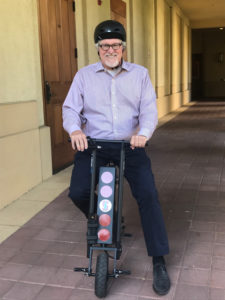On Tuesday, Stanford’s Board of Trustees met for the first time this academic year to discuss topics including a new graduate student housing project at Escondido Village and the recently completed Lucile Packard Children’s Hospital. Leadership transitions were also a theme, with Jeff Raikes ’80 presenting on his preparations for his new position as chair of the board and University President Marc Tessier-Lavigne reporting on the long-range planning process launched under his leadership.

In July, Raikes succeeded Steve Denning MBA ’78, whose term was extended for an unusual fifth year to aid in the University’s presidential transition from John Hennessy to Marc Tessier-Lavigne. Raikes emphasized his gratitude toward Denning for his service, which he called “very strategic [and] very visionary,” and expressed his desire to continue Denning’s uncompromising drive for constant progress.
“We all love this institution. We think it’s in a good place, but we want it to be in an even better place in the future,” Raikes reflected. “So in order to do that, we need to be bold, and we need to have a big vision. Steve [Denning] really emphasized that.”
As part of his transition to Board chair, Raikes has been conducting what he calls a “listening tour,” in which he conducted over 50 one-on-one and small-group meetings with a diverse set of Stanford’s stakeholders: student government leaders, academic deans, former presidents and even his counterparts from other institutions. According to Raikes, these meetings are part of the process of learning how to best execute his new role.
Raikes said that the listening tour provided him with important information on how University leaders perceive the Board and how their interactions with the Board have been productive or impedimentary in the past. While the tour made for “some very long days,” Raikes spoke with enthusiasm about the “energy” and “exciting ideas” that sprang from the meetings.
One takeaway that Raikes emphasized was the challenge of rising housing and transportation costs in the Bay Area, which make it difficult for Stanford to attract faculty, support staff and graduate students.
During its meeting, the Board achieved a partial construction approval for the new Escondido Village graduate housing, which will house 2000 students in four buildings. This construction project, which will be the largest in Stanford’s history, is slated to begin in November with plans to open in September 2020.
“Getting our graduate students housed on campus, whenever possible, is very important,” Raikes said, adding that he hoped the space would allow for “community among the graduate students” while “preserving open space for recreation.”
The Board also took a tour of the new Lucile Packard Children’s Hospital, which was recently completed and will open early next year. Several Board members expressed excitement about the facility, which Raikes described as “technologically advanced, family friendly, and environmentally stable.”
“My personal takeaway was just how much they had put into the important touches for the family,” Raikes said, calling the hospital a truly “healing place.”
He described a few examples of the hospital’s design elements that are intended to diminish children’s fear, such as constellations on the ceilings of imaging rooms and a special anesthesia mask linked to a high-tech video game – when the patients breathe into the mask, they get to watch an animation of a dragon breathing fire.
“The most acute cases [will] tend to be at this hospital,” Raikes said, adding that the new hospital “put in the kinds of touches that I know will make a difference in the lives of children while they’re getting healthy,” Raikes said.
The Board also heard from President Marc Tessier-Lavigne as he provided his annual report on Monday morning. Tessier-Lavigne emphasized his desire to remain “visible, connected, transparent and engaged” during his second year as president, a goal he has pursued by meeting with “hundreds” of students and faculty thus far.
Tessier-Lavigne’s first year has taken him beyond Palo Alto: He made frequent trips to Washington DC to lobby for continued federal funding for academic research and commented that the outlook is reassuring. While the White House proposed cuts in research funding, Congress recently approved an addition of $2 billion to sustain federally-funded research.
“It’s a turbulent time in politics in our country,” Raikes said, adding that Tessier-Lavigne’s advocacy for federal research funding had not only been “reassuring for leadership [at Stanford],” but also represents “a recognition at all levels … that federally funded research in this country is a very important part of what creates jobs and economic growth.”
Raikes expressed optimism that this “successful” presidential transition has set the University up well for addressing future action items, such as the long-range planning process. Last year, students and faculty submitted more than 2800 ideas, and the University has begun the process of organizing, refining and prioritizing these goals for Stanford’s future.
“Many of the ideas [that were submitted] were important examples of continuously improving this university, incremental improvements,” Raikes said. “But we also need to step back and say, ‘what are those big ideas?’”
Raikes commented that the large-scale process is likely to involve complex choices and trade-offs, but said he has “great faith in the leadership of the institution” and the “energy and ideas” of Stanford’s students, faculty and staff.
Contact Katie Keller at ktkeller ‘at’ stanford.edu.